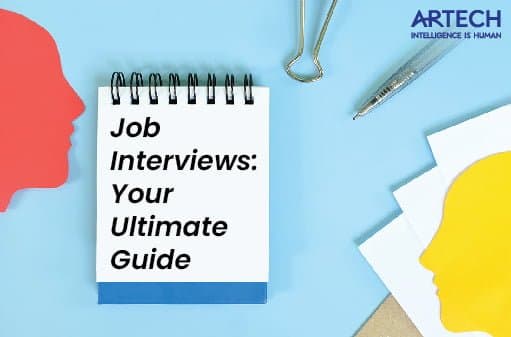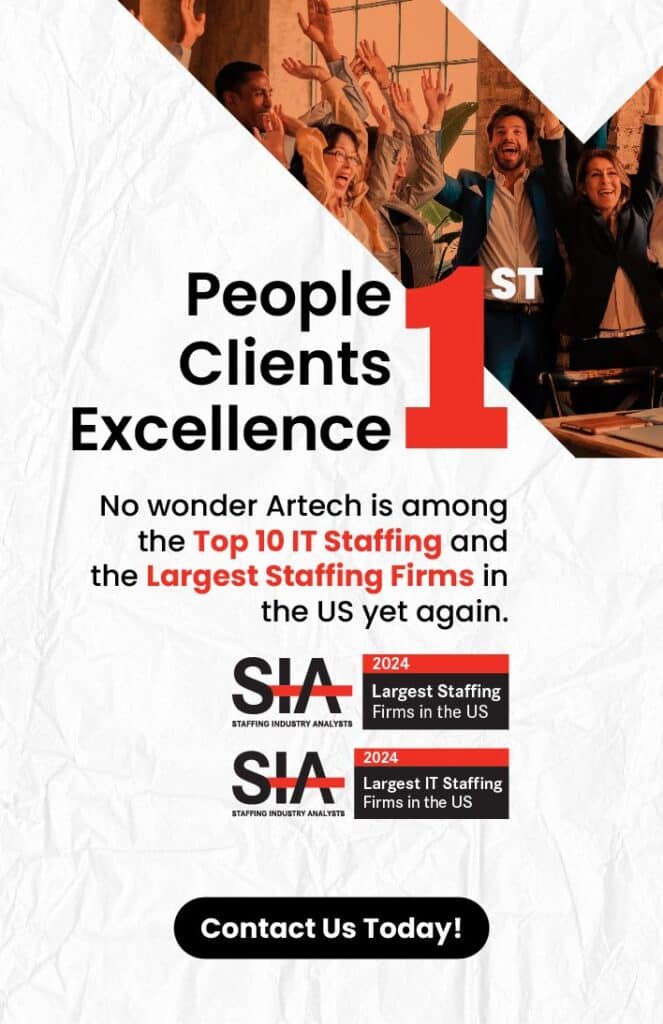
Entering the job market and facing the interview process can feel like a daunting journey, but it does not have to be. Interviews are an essential part of your path in the recruitment process, and while they may seem intimidating to some, the right tools and knowledge can turn them into an opportunity to be your dream job’s ideal candidate.
Preparing Your Resume: The First Step to Getting Your Foot in the Door
Your resume often serves as the initial introduction to potential employers. It is your personal advertisement, highlighting your skills and experiences. To get an interview, your resume needs to stand out and specifically address the job for which you are applying.
Customizing Your Resume for Each Job
- Dissect the Job Description: Pinpoint the crucial skills, experiences, and qualifications the job requires.
- Promote Relevant Experience: Highlight any past roles and accomplishments that align with the job requirements.
- Sprinkle in Pertinent Keywords: Utilize specific language from the job description. Remember, many companies use Applicant Tracking Systems (ATS) that give priority to resumes containing certain keywords.
Refine and Review Your Resume
Paying attention to detail is crucial. Errors on a resume can leave a negative impression on potential employers. Follow this straightforward process to ensure your resume is polished and error-free:
- Write Your Initial Draft: Focus on recording all your information first.
- Revise: Go over your resume with a critical eye. Trim unnecessary details and make sure your points are concise.
- Proofread: Keep an eye out for any grammatical, spelling, or punctuation errors.
- Get a Second Opinion: Have a trusted individual review your resume. They might catch errors you missed.
Dressing for Success: Making a Memorable First Impression
The way you present yourself can have a significant impact on how you are perceived. Here are some tips to ensure you are dressed for success:
Get a Feel for the Company’s Dress Code
Every organization has its dress code, ranging from business formal to casual. Research the company to understand the accepted attire. You can often find photos on their website or social media platforms that provide insights into the company’s fashion norms.
Err on the Side of Overdressing
If you are unsure about the dress code, it is better to be overdressed than underdressed. Dressing slightly more formally than necessary can indicate that you take the job opportunity seriously.
Understanding Different Interview Formats: In-Person Vs. Virtual
The evolution of technology and shifts in work styles have given rise to two primary types of job interviews: in-person and virtual. These different formats require varied approaches, and understanding these nuances can provide a competitive edge.
The Classic In-Person Interview
In an in-person interview, you will meet your interviewer(s) face-to-face, typically at the company’s office. Here are some factors unique to in-person interviews:
- Arrival Time: Plan to arrive a little early – about 10-15 minutes before your scheduled time.
- Navigating the Office: Be courteous to everyone you meet, from the receptionist to potential future colleagues.
- Non-verbal Communication: Body language plays a significant role. Be mindful of maintaining good posture, making eye contact, and providing a firm handshake when culturally appropriate and permitted.
The Modern Virtual Interview
On the other hand, virtual interviews are conducted remotely, usually over a video call. While they may seem less formal, it is important to treat them with the same seriousness as in-person interviews. Consider these unique aspects:
- Setting: Choose a quiet, well-lit area where you will not be disturbed.
- Technology: Familiarize yourself with the platform being used, and check your internet connection, microphone, and camera beforehand.
- Attire: Dress as professionally as you would for an in-person interview. Stick to neutral or muted colors that will not distract or distort the camera.
Comparison: In-Person Vs. Virtual Interview
Here is a handy table that outlines the key differences:
| In-Person Interview | Virtual Interview | |
| Preparation | Travel, arrive early, navigate the office | Check your technology, pick a suitable location |
| Non-verbal Communication | Full body language | Limited to facial expressions, upper body |
| Attire | Depends on company’s culture | Professional; neutral colors work best |
| Interaction | With multiple staff members | With the interviewer(s) |
Remember, no matter the interview type, the core objective remains the same: to highlight why you are the perfect fit for the role.
Demystifying the Interview Process
The job interview is your moment to shine. You need to demonstrate not just your qualifications, but also your personality, values, and how you would fit in the team. Let us break this down into two main components: addressing common interview questions and maintaining positive body language.
Common Job Interview Questions
Prepare for these frequently asked questions:
- Tell me about yourself. This is your chance to provide a summary of your professional journey and aspirations.
- Why are you interested in this role? Show your enthusiasm for the job and the company.
- What are your strengths and weaknesses? Be honest but select traits that align with the role for strengths and weaknesses that you are actively working on.
- Where do you see yourself in five years? This question gauges whether your career goals align with the company’s vision.
The Role of Body Language
Body language is a powerful communicator during an interview. Here is how to use it to your advantage:
- Maintain Eye Contact: This can convey confidence and engagement.
- Good Posture: Stand or sit up straight. Slumping can seem unprofessional or disinteresting.
- Use Hand Gestures: If it feels natural, use hand gestures while speaking. They can enhance your communication and show enthusiasm.
Post-Interview Etiquette: Don’t Forget the Follow-Up
Following up after an interview is an underutilized strategy that can set you apart from other candidates. It is a subtle way to show your interest in the role and remind the employer about you.
Send a Thank You Note
Sending a polite thank-you note within 24 hours post-interview can leave a positive lasting impression. This note should:
- Express gratitude for the opportunity.
- Reiterate your interest in the role.
- Recap because you believe you are a good fit for the job.
Follow Up After a Week
If you do not receive a response within the time mentioned by the interviewer, it is acceptable to send a gentle follow-up email.
The Interview Is a Two-Way Street
An interview is not just for the employer to evaluate you—it is also for you to assess whether the company’s culture and the role align with your career goals and personal values. The key to success in any job interview lies in preparation, presentation, and perseverance. A rejection is not a dead end, but an opportunity to grow and improve. Always remember, each ‘no’ is just a stepping stone towards that ultimate ‘yes.’ Good luck on your journey, and here is to facing your next interview!
Turn Rejection into a Learning Opportunity
If you do face rejection, do not take it to heart. Use it as a learning experience to improve for the next opportunity. Here are some steps to turn rejection into a learning opportunity:
- Request Feedback: If it is appropriate and you feel comfortable, ask the interviewer for feedback on how you can improve.
- Reflect on Your Performance: Consider what went well and what did not. You were caught off guard by a question or felt your responses were too vague.
- Identify Areas for Improvement: You need to work on communicating your thoughts more clearly or managing your nerves better.
- Implement Changes: Use your reflections and any feedback you received to enhance your interview skills for next time.
Continuous Learning and Development
Keeping your skills and knowledge fresh is essential in today’s rapidly changing job market. Here are some ways to stay competitive:
- Pursue Further Education: This could be a new degree, a part-time course, or online learning.
- Stay Current with Industry Trends: Read industry news, reports, and publications. Attend webinars, conferences, and networking events.
- Develop Soft Skills: Skills like communication, leadership, problem-solving, and emotional intelligence are highly valued across all fields.
In Conclusion: Your Job Search is a journey
Finding the right job is a journey, and like all journeys, it comes with its own set of challenges. But with the right strategies, you can tackle every job interview with confidence and leave an impression on your potential employers. Remember, each interview—whether it results in a job offer or not—is a step forward in your career.
Every experience is an opportunity to learn and grow. Your resilience, perseverance, and continual self-improvement will pave the way to your dream job. Do not be disheartened by rejection; rather, view it as a stepping stone to becoming a stronger candidate for future opportunities. Good luck on your job search journey. Remember, each ‘no’ is one step closer to that final ‘yes.’
This content is crafted with care by Artech Staff Authors. While it reflects our commitment to quality and accuracy, please note that it is not authored by industry experts. We aim to offer valuable and engaging information, and for more specialized or technical advice, we recommend consulting with professionals in the relevant field. If you have any concerns or require further assistance, please contact us at support@artech.com. Thank you for trusting Artech as your source of informative content.








